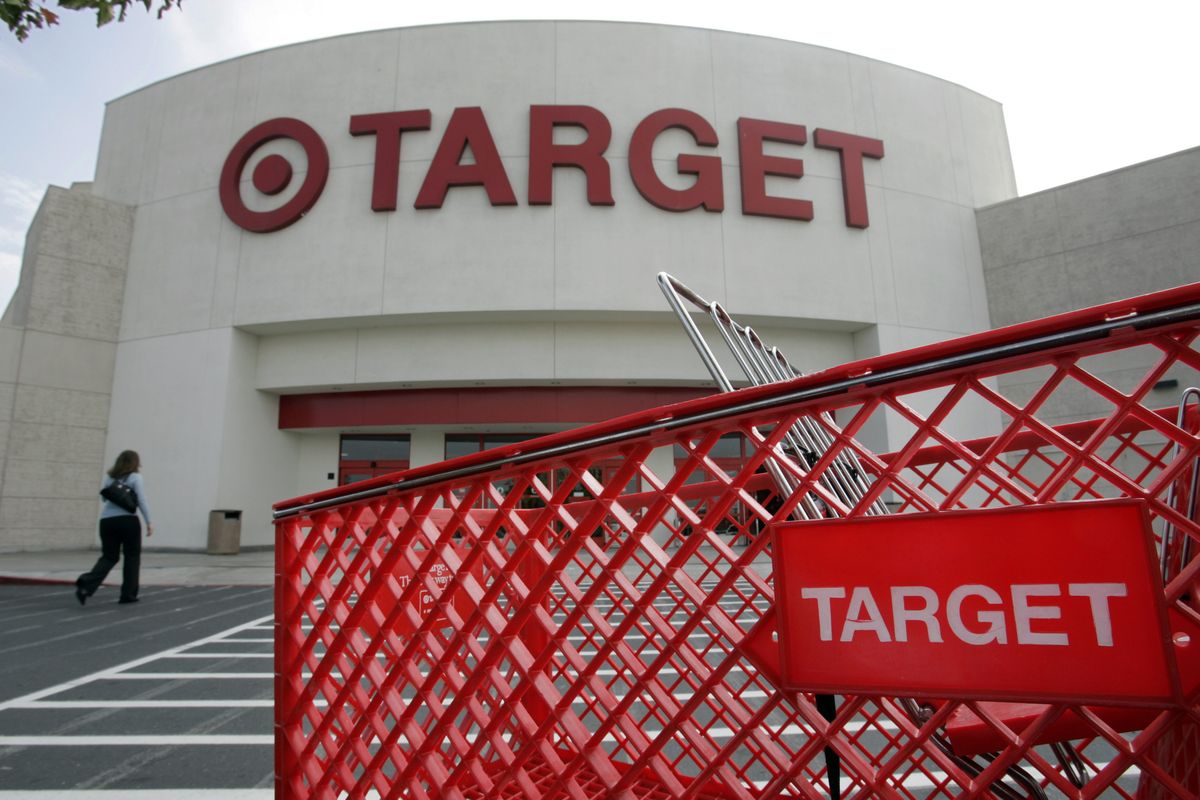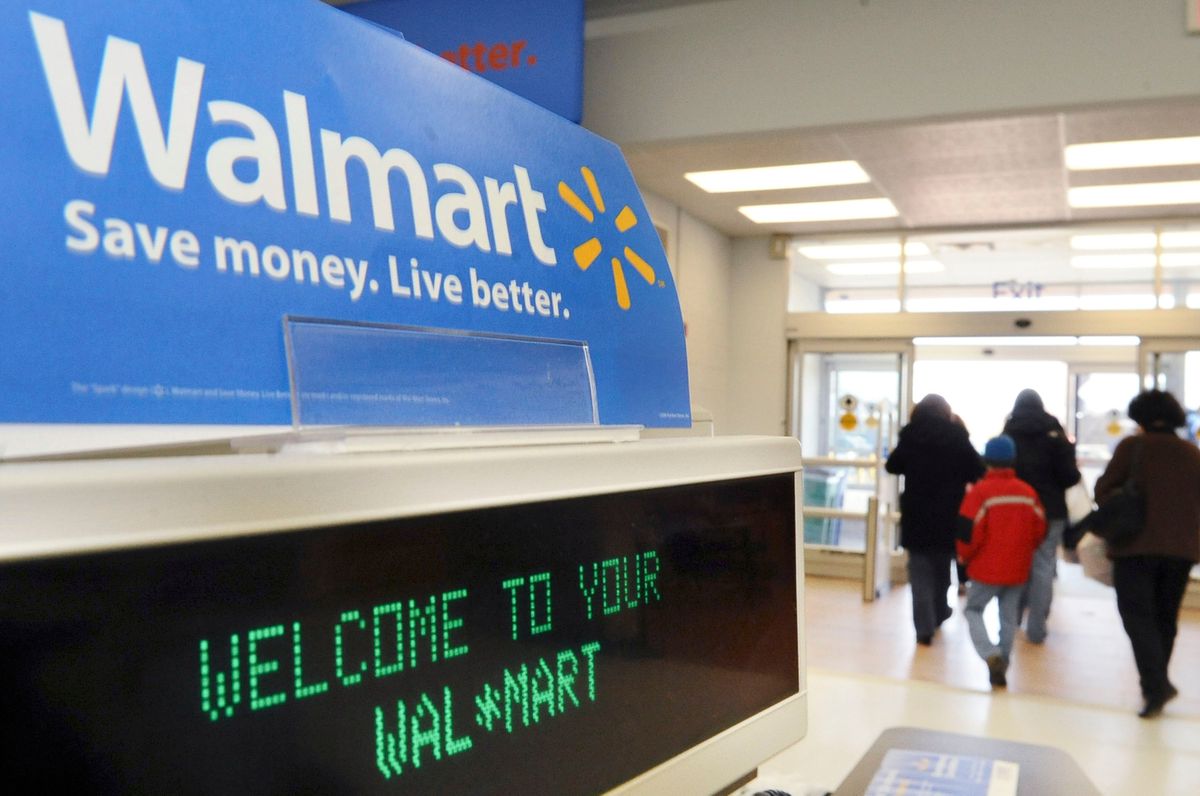Retail rumble
While Target is viewed as more upscale than Wal-Mart, it has been criticized for failing to recognize recessionary trends
In this Nov. 20, 2007, file photo, the front entrance of a Target store in Newark, Calif., is shown. Target Corp. is under pressure after losing market share and customers to Wal-Mart, which credits its profits and sales growth to necessities like groceries and its powerful low-cost message. (Associated Press / The Spokesman-Review)
NEW YORK – Target Corp. is going bananas to keep up with Wal-Mart Stores Inc.
The discounter, known for stylish towels and jeans, has long sold groceries. But it is barely holding onto its customers while its chief rival, Wal-Mart, is rapidly picking up new shoppers as its powerful low-cost message resonates in the recession. So Minneapolis-based Target plans to stock more fresh food – including bananas – and play up its low prices.
Meanwhile, Wal-Mart, the world’s largest retailer, is expanding its selection of nonessentials like home furnishings, while improving the quality of its store-brand food like thin-crust pizza and ice cream.
Tim Jasinski, 51 – who was filling his basket with pasta, red wine, cream sauce and a can of mushrooms at a Wal-Mart store in Waukesha, Wis., last weekend – says he rarely goes to Target anymore. When he was employed, he said, he would go to Wal-Mart only when he wanted DVDs or other electronics at discount prices. But he’s been shopping at Wal-Mart for just about everything from food to socks and underwear since he was laid off from his job as a machinist in November.
“Sure, they have some better things,” Jasinski said of Target. “But money is more important.”
About 37 percent of Target’s revenue comes from necessities like paper towels and food. For Wal-Mart, that figure is about 60 percent.
Facing criticism from Wall Street analysts who believe it’s been late to respond to the recession, Target – which is about one-sixth the size of Wal-Mart – is becoming more vulnerable. But New York-based retail consultant Walter Loeb is not convinced that the trend can’t be reversed.
Loeb said Target has “plenty of opportunities to get better,” particularly in groceries, and is making the right moves.
For the past decade, Target’s stock performance has bested that of Wal-Mart and the Standard & Poor’s 500 index. Wal-Mart’s stock suffered from 2005 to late 2007 as its zigzag between upscale and discount goods slowed sales growth. The shares also took a beating from union-funded groups.
But Target’s cheap chic mantra – its advantage in boom times – became a drag in late 2007 as the recession began and shoppers focused on basics. At the same time, Wal-Mart, based in Bentonville, Ark., found a balance of merchandise and marketing to enhance its renewed focus on price.
Target’s same-store sales – the comparison of sales at stores open at least a year and a key indicator of a retailer’s health – has lagged Wal-Mart’s since late 2007. In the most recent quarter, sales at established Target stores dropped 3.7 percent, while the indicator rose 3.7 percent at Wal-Mart, excluding fuel.
“Consumers are buying what they need to have so Target is stuck where they are, because that’s the mouse trap they built,” said Howard Davidowitz, chairman of retail consulting and investment banking firm Davidowitz & Associates. “Wal-Mart is pounding away at its price message relentlessly.”
While Target wants to keep its innovative edge, for growth, it is clearly turning to groceries, including the introduction late last year in some of its general merchandise stores – as opposed to its super centers – of prepackaged perishables like bananas and bagged lettuce. It plans to expand the concept to 100 new or remodeled stores by year’s end and to most of its new or remodeled stores in the next three years.
Target also is testing a “low-price” promise in advertising for certain locations, which will match competitors’ local advertised prices on identical items. It’s also relaunching its store-label Target Brand as Up & Up, to span 40 categories like health and beauty items by summer when new marketing begins.
But Wal-Mart keeps rolling out new programs too. Wal-Mart relaunched its Great Value food brand in March with an improved selection and reformulated recipes, and it is revamping its electronics aisles and adding exclusive home furnishing brands.
While Wal-Mart has made big strides, Target’s apparel is far more stylish, analysts say, and it retains another advantage: a better shopping experience, says Davidowitz.
Tricia Dobbertin, 34, a business analyst from Hartland, Wis., shopping with her son for clothing and necessities at Target, described herself as a faithful Target shopper who rarely goes into Wal-Mart. She said she could have gotten the same items at Wal-Mart but prefers Target’s shopping experience.
“I never like shopping there,” she said of Wal-Mart. “I can never find what I want.”

